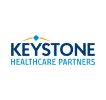OKR vs KPI: What’s the Difference Between OKR and KPI
The simplest explanation of the difference between OKRs and KPIs is that OKRs express what your organization needs to achieve and how you will achieve it, while KPIs outline how you’ll measure success and the team’s performance on the most important measures of your plan.
The conversation around OKRs (objectives and key results) vs KPIs (key performance indicators) is a bit confusing. OKRs are a framework for building your strategic plan and actions, and KPIs outline the measurement of that framework.
In this guide, we’ll cover the essentials on both OKRs and KPIs, and we’ll outline how to develop them together and help your team understand the best context and time to use each planning element.
OKR are a type of strategic planning framework where you set organization-wide objectives that articulate what you as a leadership team must achieve and then create 3-5 supporting Key Results to outline how you’ll achieve that objective. Check out our overview post on OKRs here. Pro Tip: Objectives are outcomes and are measured based on the performance of the objective’s Key Results. The biggest piece to remember about this is that Objectives are the outcomes, and Key Results are how you’ll achieve that outcome.
There are two types of KRs: Need more OKR examples? Check out our post on OKR examples here! They are designed to: OKRs are different from a href=”https://onstrategyhq.com/resources/27-examples-of-key-performance-indicators/”>Key Performance Indicators because they outline what your organization needs to achieve to reach your desired future state. The latter measures performance and ongoing metrics, but it does not express what you need to achieve and how you’ll achieve it. OKRs can be particularly effective for setting ambitious goals, encouraging creativity and risk-taking to achieve aggressive KPIs.
KPIs are quantifiable, outcome-based statements that help measure performance to ensure you and your team are on track to meet your objectives. They monitor the core performance of your plan and organization. Good plans have 5-7, each with the following components:
KPI examples can vary widely across different teams and industries. For instance, a sales team might track the number of new contracts signed, while a customer service team might measure customer satisfaction scores. Ultimately, they are designed to: KPIs are different from OKRs because they measure and track the performance of your organization’s most important performance metrics. Alternatively, the latter tells your team what they need to accomplish, and the former measures the most important elements of that plan. Objectives and Key Results are objectives measured by several outcomes. A Key Performance Indicators measures the performance of a single outcome. Pro Tip: Not every OKR is a KPI. Good plans identify 5-7 KPI measures that best articulate how your organization is performing. However, OKRs can be KPIs.
Technically speaking, they are two distinct planning elements. But an excellent planning practice is to use them together. One of the simplest ways to achieve this is by using a key performance indicator within one of your key results. Here is you can bring together these two planning elements to express what you want to achieve, how you’ll achieve it, and how you will measure your business performance. Example: A statement of what you’re trying to achieve. What’s important is that both types of KRs are not eligible for being KPIs—only the KRs that have quantifiable outcomes can also be KPIs. Pro Tip: If you include KPIs as outcome measures in your results, we don’t recommend creating new key performance indicators every single quarter. Instead, they should carry forward in your OKR structure consistently for the duration of the plan (or at least through the year!); you don’t want to create new ones every quarter. Barring a seismic strategic shift during the year, you want your performance indicators’ annual target to remain steady, but you can update the quarterly targets for the indicators based on the previous quarter’s actual results. How we’re going to achieve wildly loyal customers is through driving customer retention, driving overall health, potentially standing up success plans, and implementing a new CRM system. Outcome-based KRs are good to use as they have clear measurement, data sources, and time-periods. Similar to the example above, these could be used as KPIs: In this example, the increase in retention rate is a measurable output that’s critical to the success of your organization. It’s also something that is a verifiable output of performance of your organization. We would also say that it’s a key performance indicator. The overall health of your client base is also a key performance indicator. It’s nice when KPIs are leading indicators, like KR2 above, but they don’t always need to be leading. KR1 is an example of a lagging indicator. Effort-based, measurable Key Results aren’t eligible to be performance indicators because they aren’t explicitly quantifiable measures. From the example above, these shouldn’t be used as such: The number of success plans is a great output and it’s important, but it’s not a quantifiable KR, so not eligible as a key business performance indicator. Like the KR around implementing a new CRM system, it is an activity KR. Objectives and key results are designed to be reviewed and changed quarterly. But, if you include Key performance indicators within your key results, it’s important to not change them every quarter! If you opt to change an entire OKR stack next quarter, think about how you might roll your KPIs into a new or adapted OKR stack. Here’s an example: We often see people using the terms interchangeably. Don’t! OKRs outline what you’re going to do and how you will do it. KPIs outline how you’ll measure progress and track the performance of your plan. They’re different but have a symbiotic relationship. Use them together, but not interchangeably. Great plans have 5-7 KPIs to define any plan’s most important performance measures and desired outcomes. However, don’t mark every Key Result as a KPI because it will be unclear about what are the essential measures to watch and monitor. Additionally, not every Key Result is a good candidate for a KPI, particularly if the Key Result measures are outputs and not quantifiable metrics. The beauty and power of OKRs are they adapt and change quickly. However, performance measures or indicators should be measured and tracked for at least one year. So, if you have Key Results that are also KPIs, make sure they carry forward into the next set of OKRs. Ultimately, the question isn’t OKRs vs KPIs as a matter of choosing one over the other or comparing which is better. As we learned in this article, they work in tandem. So, when moving forward with your strategic plan, ask yourself, how can I make sure my OKRs and KPIs complement each other and work together, rather than separately?
The OnStrategy Team built our application to manage organizational, team, and individual business performance metrics. With our tool you can easily: The difference between OKRs vs KPIs is that OKRs express what your organization needs to achieve and how you will achieve it, and the KPIs outlines how you’ll measure the most important measures of your your plan’s OKRs. OKRs are a framework for building your strategic plan and actions, and KPIs outline the measurement of that framework. Yes, KPIs can be included in OKRs. Outcome-based Key Results are good to use as key performance indicators because they have clear measurement, data sources, and time-periods. So, a Key Performance Indicator can be integrated as the measurement for a Key Result. 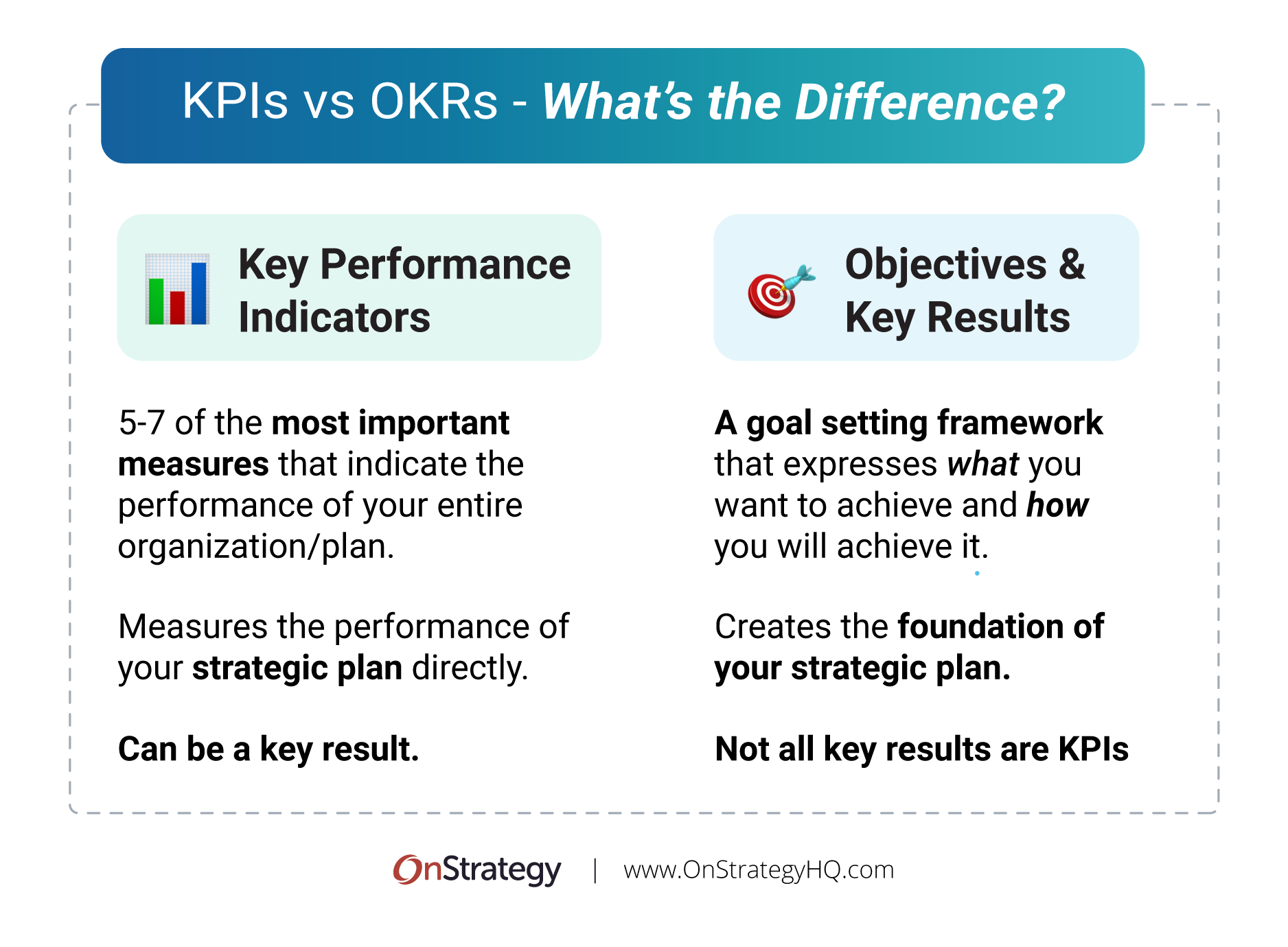
What is an OKR? (Objective and Key Results)
Objectives are Outcomes
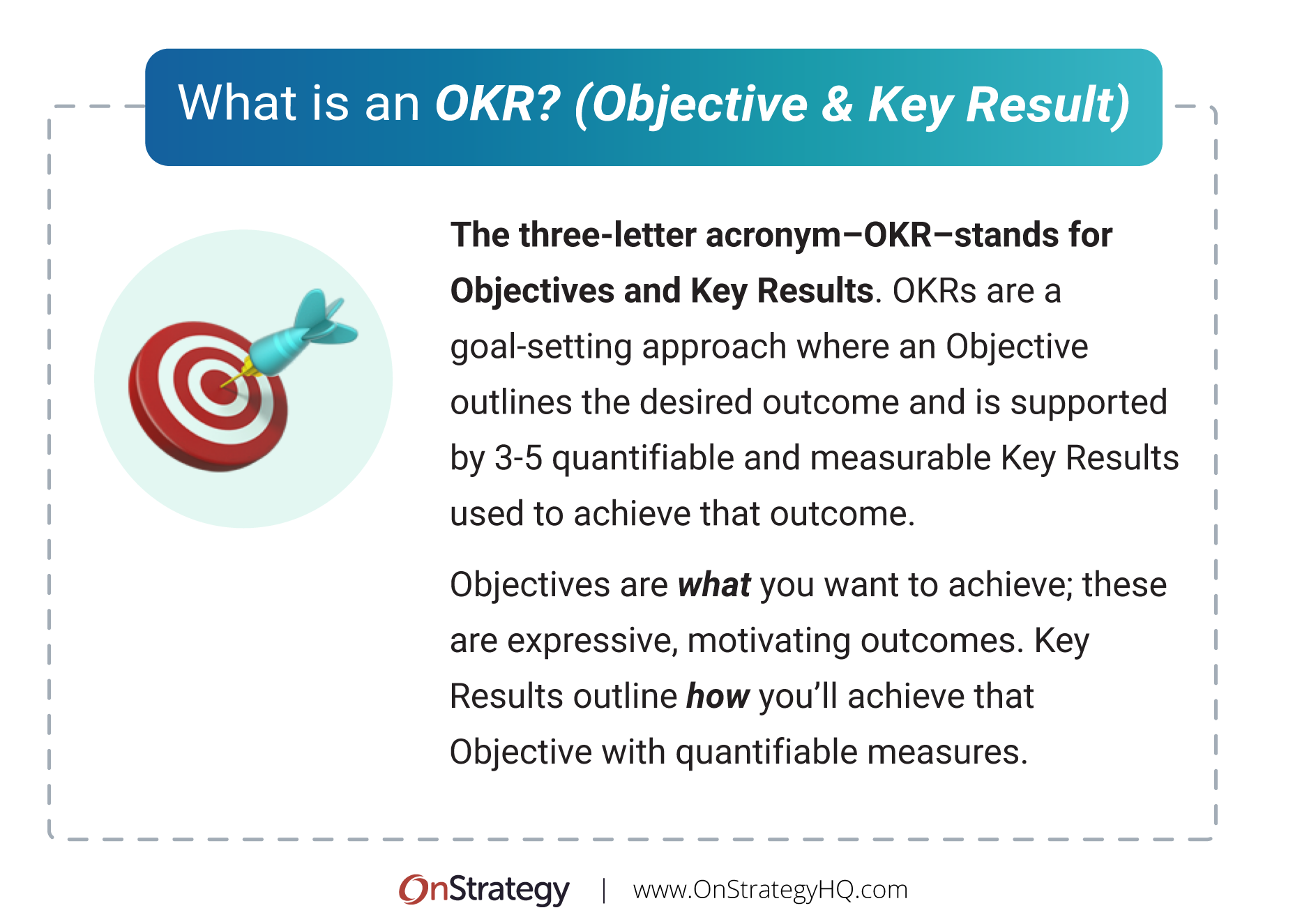
Key Results are How You’ll Achieve Your Objectives
What Do OKRs Do?
How are OKRs different from KPIs?
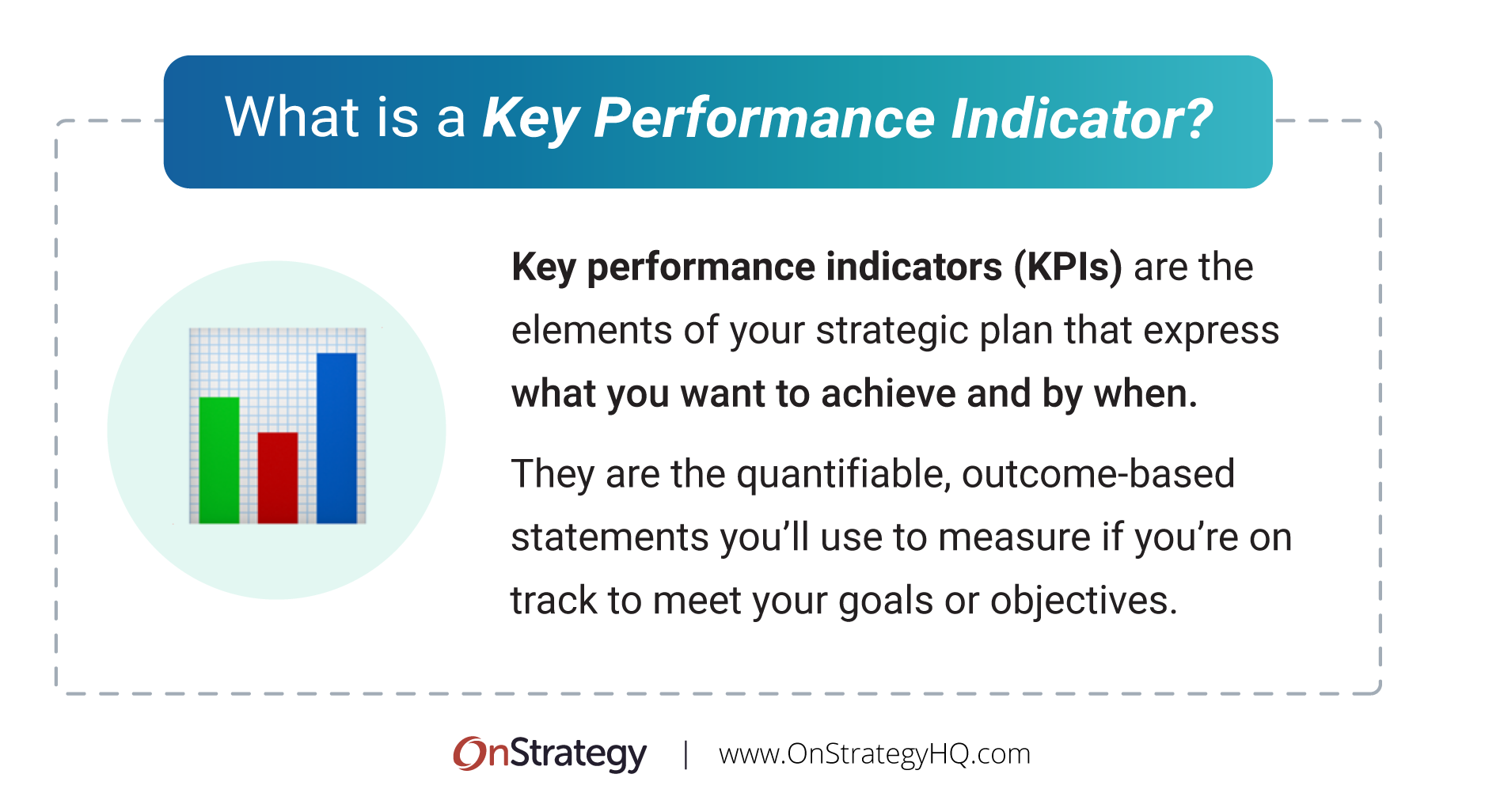
What is a KPI?

What Do KPIs Do?
How are KPIs different from OKRs?
How and When to Use these Two Frameworks Together
Creating OKRs and KPIs – An Example
An Example of How to Build KPIs into OKRs
KRs that Can Be KPIs
Key Results that Can’t Be KPIs
Carrying Forward KPIs
3 Common Mistakes to Avoid with OKRs and KPIs
Mistake #1 – Using the Terms Interchangeably
Mistake #2 – Marking Every KR as a KPI
Mistake #3 – Changing KPIs Every Quarter
Final Thoughts
OnStrategy Application for OKRs and KPIs
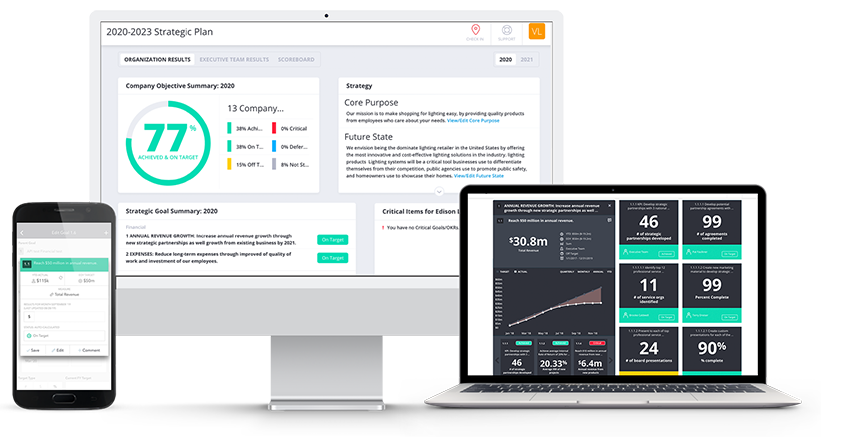
Frequently Asked Questions for OKRs and KPIs


